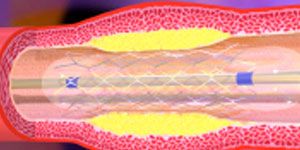Article
Men with HIV Develop More Plaque in Coronary Arteries
Author(s):
Men with HIV have more noncalcified plaque in their arteries than their uninfected counterparts, according to a study published in Annals of Internal Medicine.

Men with HIV have greater risk for developing plaque in their coronary arteries than uninfected men, regardless of their individual cardiovascular (CV) risk factors, according to research published in the April issue of Annals of Internal Medicine.
Researchers from Johns Hopkins Medicine evaluated 618 HIV-infected men and 383 uninfected men aged 40-70 years who participated in the Multicenter Aids Cohort Study (MACS) for coronary atherosclerosis using computed tomography (CT) scans. The men had no prior surgery to restore blood flow to their coronary arteries.
The scientists measured the presence and amount of plaque in the coronary arteries to determine whether plaques causing the stenosis were noncalcified, partly calcified (<50%), or calcified. Since noncalcified plaque is not visible using standard CT angiography, the researchers injected contrast dye to enhance visibility.
HIV-infected men were found to have greater prevalence of any plaque, especially noncalcified plaque, than uninfected men, which suggested an increased risk for heart attacks. This held true even after accounting for other coronary artery disease (CAD) risk factors, such as high cholesterol, smoking, and high blood pressure.
Coronary artery stenosis >50% was associated with more advanced HIV and longer treatment with highly active antiretroviral treatment among HIV-infected men.
“MACS participants are a very good population for this study, because the control group comprises uninfected men drawn from the same population of men who are infected,” lead study author Wendy S. Post, MD, MS, noted. “This means the uninfected men are also at risk for HIV and share similar environmental exposures and lifestyles.”
Traditional CV risk factors in HIV-infected men need to be modified, the authors wrote. They hoped to repeat the process to find out why HIV-infected men have more noncalcified plaque than their uninfected counterparts.





